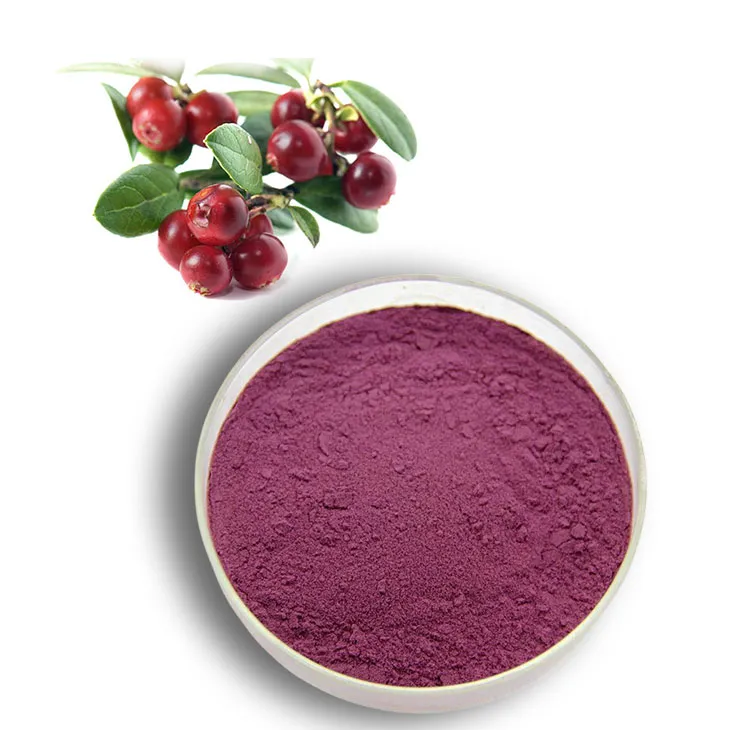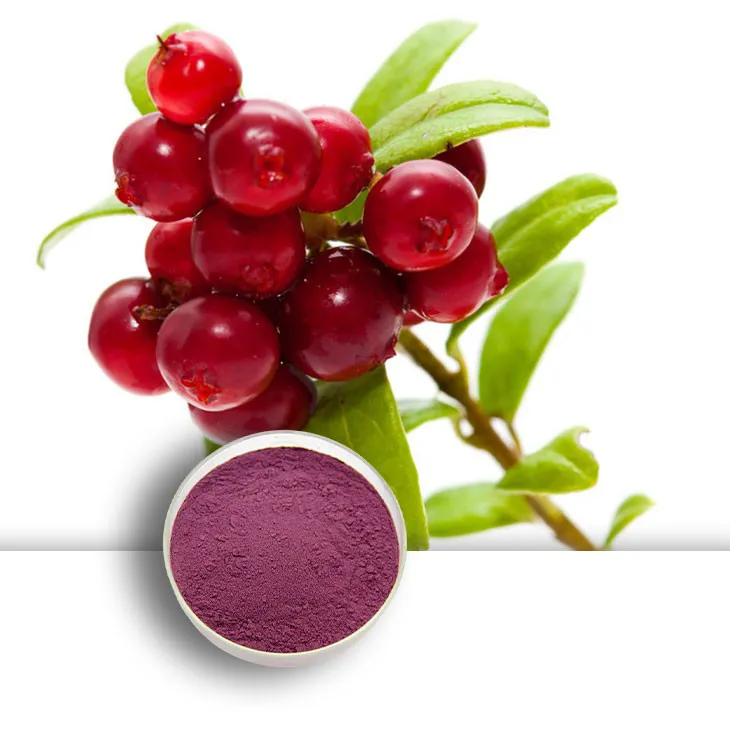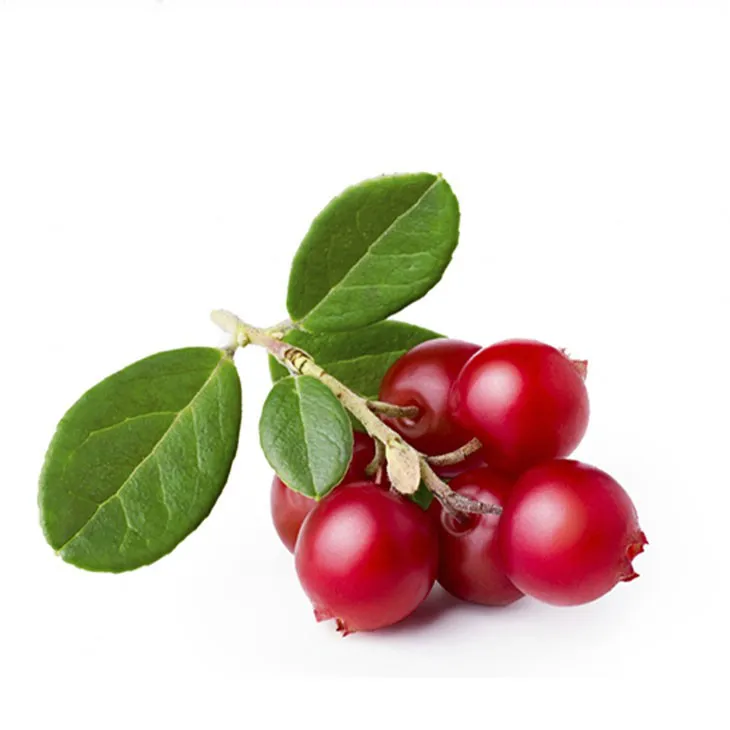- 0086-571-85302990
- sales@greenskybio.com
How to make powder from bilberry extract?
2024-11-29

1. Introduction to Bilberry
The European bilberry (Vaccinium myrtillus) is a small, dark - blue berry that has been used for centuries in traditional medicine. It is rich in antioxidants, particularly anthocyanins, which are responsible for its deep blue - purple color. These compounds have been associated with numerous health benefits, including improved vision, reduced inflammation, and protection against cardiovascular diseases.

2. Factors Influencing the Quality of Bilberry Extract Powder
2.1 Raw Material Quality
The quality of the bilberries used for extraction is of utmost importance. Freshness and ripeness of the berries can significantly affect the final powder quality. Bilberries should be harvested at the peak of their ripeness to ensure maximum nutrient content. Additionally, factors such as the growing conditions (soil quality, climate, altitude) can also impact the composition of the berries. For example, bilberries grown in nutrient - rich soil and a favorable climate are likely to have a higher content of active compounds.
2.2 Extraction Method
The method used for extracting the active compounds from bilberries can have a profound impact on the quality of the resulting powder. Different extraction methods can lead to varying yields and purities of the extract. For instance, solvent - based extraction methods may require careful selection of solvents to avoid leaving behind harmful residues. On the other hand, supercritical fluid extraction can offer a more pure and clean extraction, but it may be more expensive and technically demanding.
2.3 Drying and Processing
After extraction, the drying process is crucial for converting the extract into a powder form. Proper drying techniques are necessary to preserve the integrity of the active compounds. Over - drying can lead to the degradation of some of the heat - sensitive components, while under - drying may result in a product that is not completely powdered or has a shorter shelf - life. Processing conditions such as temperature, pressure, and time need to be carefully controlled during drying.

3. Extraction Methods for Bilberry
3.1 Solvent Extraction
- Selection of Solvent: Common solvents used for Bilberry Extraction include ethanol, methanol, and water. Ethanol is often preferred as it is effective in extracting the anthocyanins and other active compounds while being relatively safe for consumption. However, the concentration of ethanol needs to be carefully optimized. For example, a 70% ethanol solution may be a good starting point for extraction.
- Maceration: The bilberries are typically crushed or ground into a pulp before being mixed with the solvent. This mixture is then left to macerate for a certain period, usually several hours to a few days. During maceration, the solvent penetrates the bilberry tissue and dissolves the active compounds.
- Filtration: After maceration, the mixture is filtered to separate the liquid extract from the solid residue. Filtration can be done using various methods such as gravity filtration through filter paper or vacuum filtration for a faster and more efficient process.
- Concentration: The filtered liquid extract is then concentrated to remove the solvent. This can be achieved through evaporation under reduced pressure or by using a rotary evaporator. The goal is to obtain a concentrated extract that can be further processed into a powder.
3.2 Supercritical Fluid Extraction
- Principle: Supercritical fluid extraction utilizes a supercritical fluid, most commonly carbon dioxide (CO₂), as the extracting agent. CO₂ in its supercritical state has properties of both a liquid and a gas, allowing it to penetrate the bilberry matrix effectively and selectively extract the desired compounds.
- Equipment: Specialized equipment is required for supercritical fluid extraction. The system consists of a high - pressure pump to maintain the CO₂ in its supercritical state, an extraction vessel where the bilberries are placed, and a separation unit to separate the extract from the CO₂. This method is more complex and expensive compared to solvent extraction but offers advantages in terms of purity and environmental friendliness.
- Process: The bilberries are loaded into the extraction vessel, and the supercritical CO₂ is pumped through the vessel at a specific temperature and pressure. The active compounds are dissolved in the CO₂, and the extract - laden CO₂ is then passed through the separation unit. By changing the pressure and temperature in the separation unit, the CO₂ can be vaporized, leaving behind the concentrated Bilberry Extract.

4. Conversion of Bilberry Extract into Powder
4.1 Spray Drying
- Preparation of the Feed: The bilberry extract is first prepared into a liquid feed. This may involve diluting the concentrated extract if necessary to achieve the appropriate viscosity for spray drying. Additives such as maltodextrin may be added to improve the drying process and the stability of the final powder.
- Spray Drying Process: The liquid feed is then atomized into a fine mist using a spray nozzle in a drying chamber. Hot air is simultaneously introduced into the chamber, which causes the water in the mist to evaporate rapidly. As the water evaporates, the solid components of the extract form small particles that fall to the bottom of the chamber as a powder. The temperature, air flow rate, and atomization pressure need to be carefully controlled during spray drying to ensure a high - quality powder.
4.2 Freeze - Drying
- Freezing: The bilberry extract is first frozen at a very low temperature, typically below - 40°C. This freezing process helps to preserve the structure and activity of the active compounds in the extract.
- Sublimation: The frozen extract is then placed in a vacuum chamber, and the pressure is reduced. Under these conditions, the ice in the extract sublimes, that is, it changes directly from a solid to a gas without passing through the liquid phase. As the ice sublimes, the remaining solid components form a porous powder structure.
- Secondary Drying: After sublimation, a secondary drying step may be required to remove any remaining moisture. This is usually done at a slightly higher temperature and lower pressure to ensure complete drying of the powder.
5. Applications of Bilberry Extract Powder in Different Sectors
5.1 Health Sector
Bilberry extract powder is widely used in the health sector due to its antioxidant and anti - inflammatory properties. It can be formulated into dietary supplements, such as capsules or tablets, for promoting eye health. Studies have suggested that the anthocyanins in bilberry can help improve night vision and protect against age - related macular degeneration. Additionally, it may also be used in functional foods and beverages for its potential cardiovascular benefits, such as reducing blood pressure and improving blood lipid profiles.
5.2 Food Sector
- In the food industry, bilberry extract powder can be used as a natural food coloring agent. Its deep blue - purple color can add an attractive hue to various food products, such as yogurts, ice creams, and bakery items. Unlike synthetic food colorings, bilberry extract powder is a natural and potentially healthier alternative.
- It can also be incorporated into food products for its flavor and nutritional value. For example, it can be added to jams, jellies, and fruit spreads to enhance the flavor and provide additional health benefits.
5.3 Cosmetic Sector
- The antioxidant properties of bilberry extract powder make it a valuable ingredient in the cosmetic industry. It can be used in skin care products, such as creams, lotions, and serums, to protect the skin against oxidative stress caused by environmental factors like UV radiation and pollution. This can help in reducing the signs of aging, such as wrinkles and fine lines.
- It may also be used in hair care products. For example, it can be added to shampoos and conditioners to improve hair health by strengthening the hair follicles and promoting hair growth.
6. Conclusion
Making powder from bilberry extract involves a series of carefully controlled processes, from the selection of high - quality bilberries to the appropriate extraction and drying methods. The quality of the resulting powder is influenced by multiple factors, including raw material quality, extraction method, and drying process. The bilberry extract powder has diverse applications in the health, food, and cosmetic sectors, making it a valuable natural product. As research on bilberries continues, new and improved methods for extraction and powder production may be developed, further expanding its potential applications.
FAQ:
What are the main extraction methods for bilberry extract to make powder?
There are several common extraction methods. One is solvent extraction, where solvents like ethanol are often used to extract the active components from bilberries. Another method is supercritical fluid extraction, which uses supercritical carbon dioxide. It offers advantages such as being more environmentally friendly and producing a purer extract. Maceration, which involves soaking the bilberries in a solvent for an extended period, can also be used. Each method has its own characteristics and may affect the quality and properties of the resulting bilberry extract powder.
How does the extraction method influence the quality of bilberry extract powder?
The extraction method plays a crucial role in determining the quality of the powder. For example, solvent extraction methods need to ensure that the solvent is completely removed during the drying process to avoid any residue that could affect the quality and safety of the powder. Supercritical fluid extraction can better preserve the bioactive compounds in bilberries as it operates under milder conditions compared to some traditional solvent extraction methods. If the extraction process is not properly controlled, it may lead to the degradation of important nutrients or the inclusion of unwanted substances, thereby reducing the overall quality of the bilberry extract powder.
What are the bioactive components in bilberry extract powder?
Bilberry extract powder contains various bioactive components. Anthocyanins are one of the main ones. These are powerful antioxidants that can help protect cells from oxidative damage. It also contains flavonoids, which have anti - inflammatory properties. Other components may include vitamins such as vitamin C and minerals in small amounts. These bioactive components contribute to the potential health benefits of bilberry extract powder in areas such as vision improvement, antioxidant activity, and cardiovascular health support.
How can bilberry extract powder be used in the health sector?
In the health sector, bilberry extract powder can be used in multiple ways. It can be formulated into dietary supplements, such as capsules or tablets, for people to take regularly to support eye health, as it is believed to help improve night vision and protect against eye diseases like macular degeneration. It may also be used in functional foods. For example, it can be added to smoothies or energy bars to provide antioxidant and anti - inflammatory benefits. Additionally, some research is exploring its potential in managing diabetes and improving blood circulation due to its various bioactive components.
How is bilberry extract powder used in the food industry?
In the food industry, bilberry extract powder can be used as a natural colorant. Its anthocyanin content gives it a deep purple color, which can be used to color various food products like jams, jellies, and baked goods. It can also be used as a flavor enhancer, adding a unique fruity flavor to products. Moreover, due to its potential health - promoting properties, it can be added to so - called functional foods" like breakfast cereals or yogurt to increase their nutritional value and appeal to health - conscious consumers.
How is bilberry extract powder used in the cosmetic industry?
In the cosmetic industry, bilberry extract powder is highly valued for its antioxidant properties. It can be incorporated into skincare products such as creams, lotions, and serums. The antioxidants in the powder can help protect the skin from free radical damage, which is associated with premature aging, wrinkles, and dull skin. It may also have anti - inflammatory effects on the skin, making it suitable for products aimed at reducing skin redness and irritation. Additionally, its potential to improve blood circulation could contribute to a healthy - looking complexion.
Related literature
- "The Extraction and Characterization of Bilberry Extract"
- "Bilberry Extract: Properties, Production and Applications in Health"
- "Advanced Techniques for Bilberry Powder Production"
- ▶ Hesperidin
- ▶ citrus bioflavonoids
- ▶ plant extract
- ▶ lycopene
- ▶ Diosmin
- ▶ Grape seed extract
- ▶ Sea buckthorn Juice Powder
- ▶ Beetroot powder
- ▶ Hops Extract
- ▶ Artichoke Extract
- ▶ Reishi mushroom extract
- ▶ Astaxanthin
- ▶ Green Tea Extract
- ▶ Curcumin Extract
- ▶ Horse Chestnut Extract
- ▶ Other Problems
- ▶ Boswellia Serrata Extract
- ▶ Resveratrol Extract
- ▶ Marigold Extract
- ▶ Grape Leaf Extract
- ▶ blog3
- ▶ blog4
-
Active components in dandelion leaf extract.
2024-11-29
-
Chinese Rose Hip Extract Factories.
2024-11-29
-
Supplier of Hedyotis diffusa extract.
2024-11-29
-
Standard - process stevia extract.
2024-11-29
-
The Best Apple Cider Vinegar Powder in 2024.
2024-11-29
-
Thunder God Vine Extract
2024-11-29
-
Lemon Balm Extract
2024-11-29
-
Wheat Germ Extract
2024-11-29
-
Nettle leaf extract
2024-11-29
-
Clove Powder
2024-11-29
-
Dandelion Leaf Extract
2024-11-29
-
Moringa powder
2024-11-29
-
Oyster Mushroom Extract Powder
2024-11-29
-
Sea buckthorn oil
2024-11-29
-
Boswellia Serrata Extract
2024-11-29





















